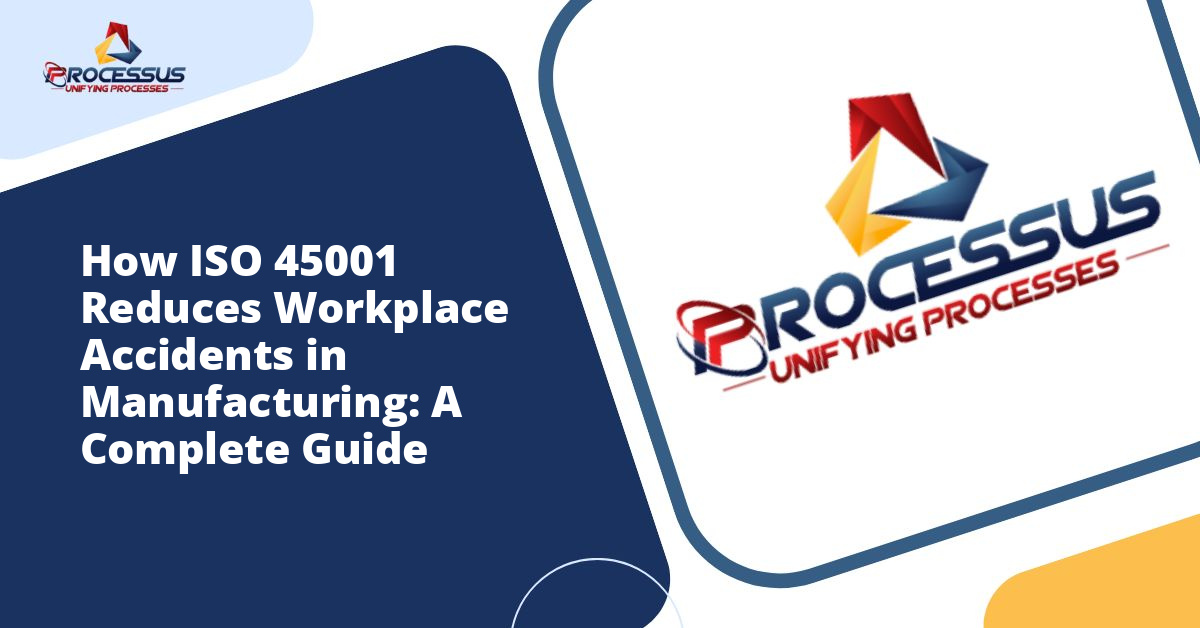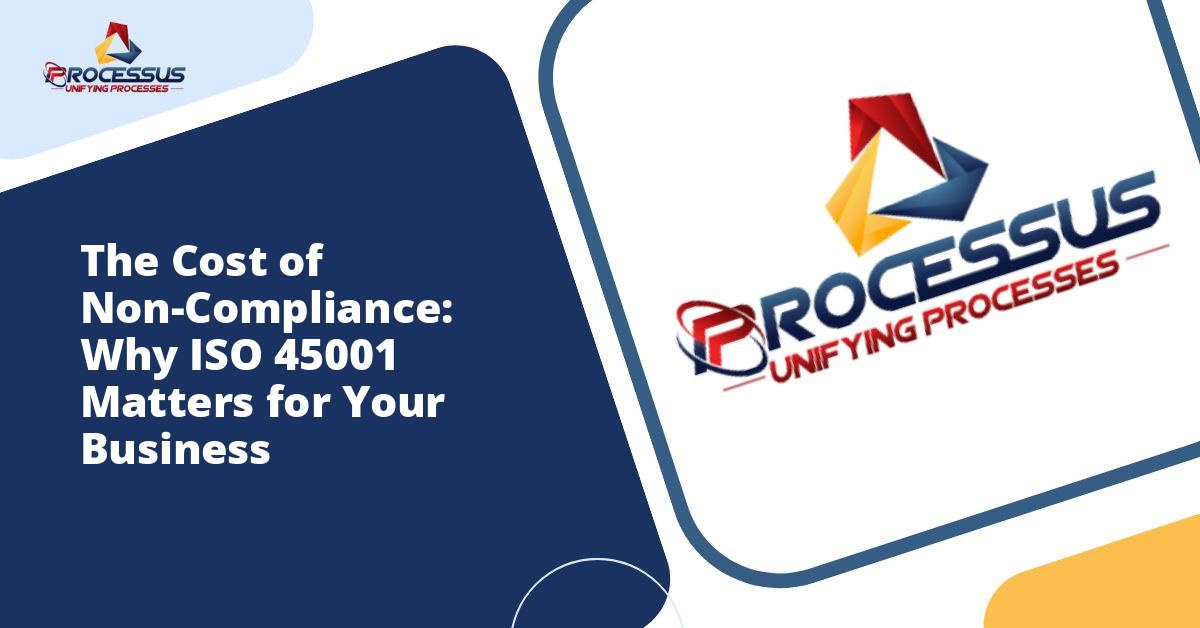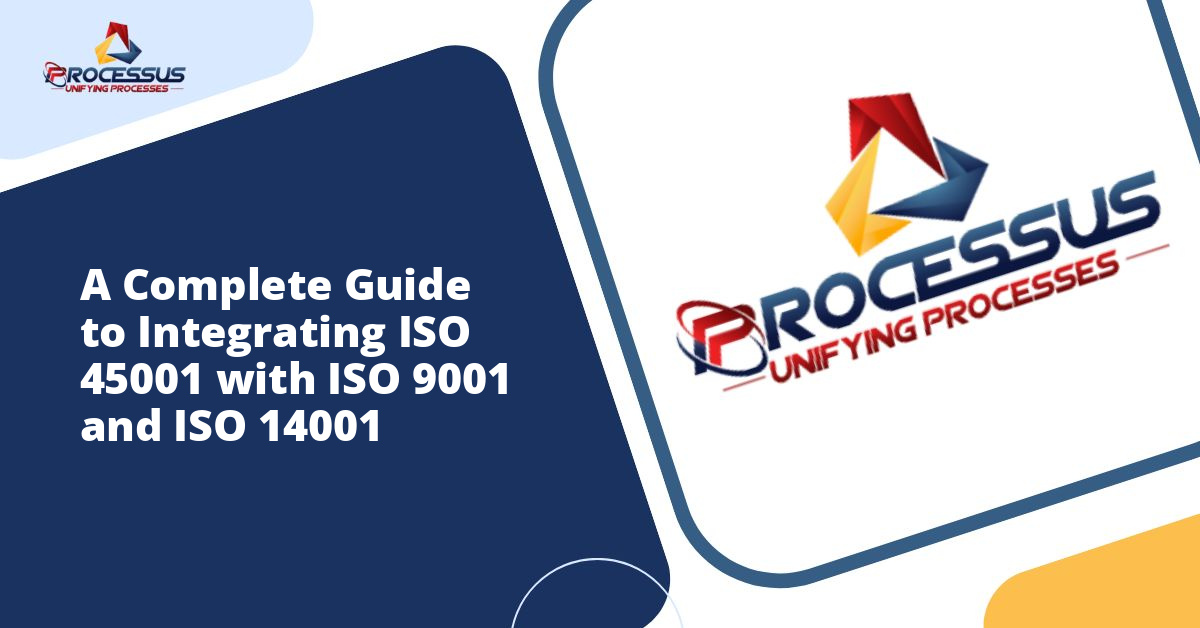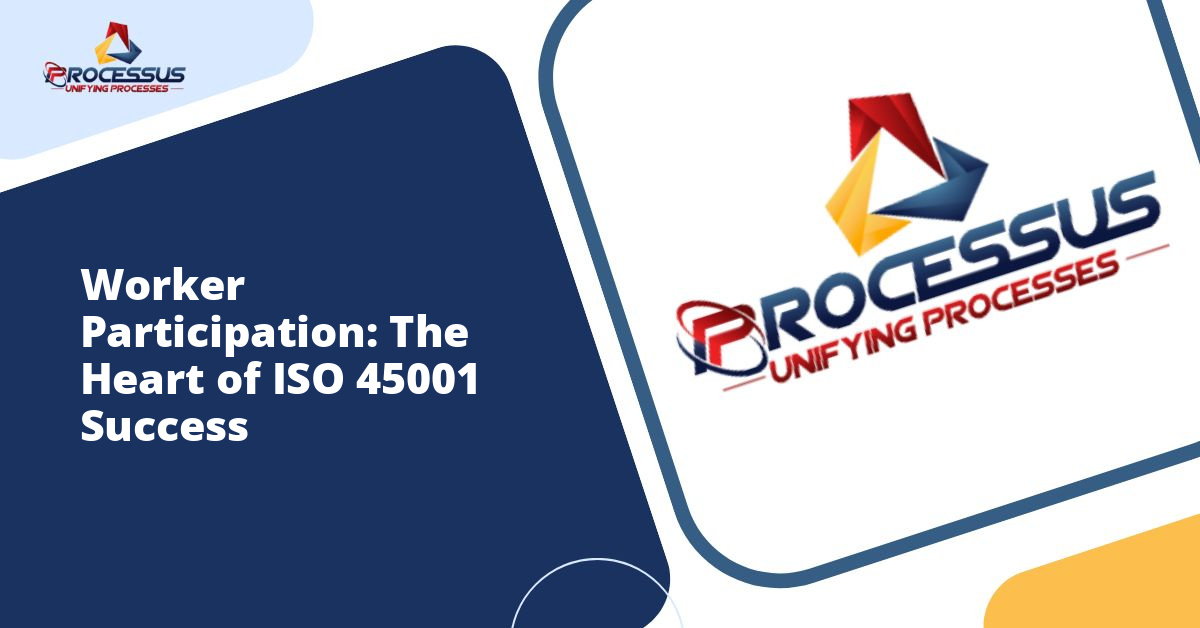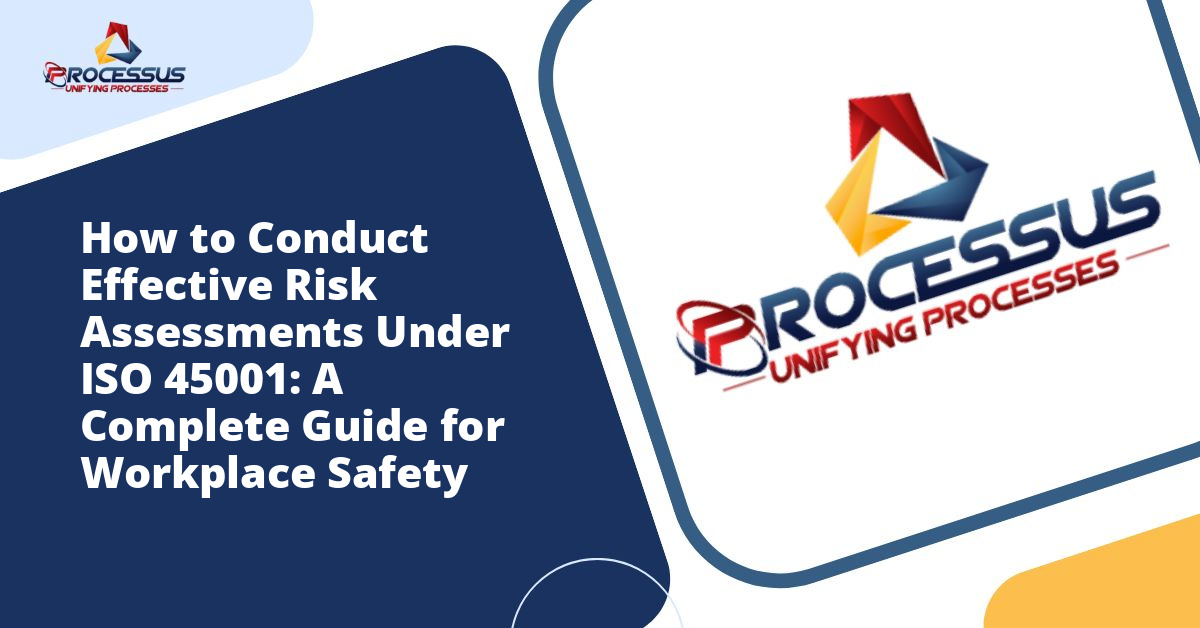Manufacturing facilities face significant challenges in maintaining safe working environments. From heavy machinery operations to chemical handling, the risks are substantial and ever-present. ISO 45001, the international standard for occupational health and safety management systems, has emerged as a powerful framework for addressing these concerns systematically. This comprehensive guide explores how implementing ISO 45001 can dramatically reduce workplace accidents in manufacturing settings while creating a culture of continuous safety improvement.
Understanding ISO 45001 and Its Purpose
ISO 45001 represents the first global standard specifically designed for occupational health and safety management systems. Published in March 2018, it replaced the previous OHSAS 18001 standard and brought workplace safety management into alignment with other ISO management system standards such as ISO 9001 for quality and ISO 14001 for environmental management.
The standard provides a framework that organizations can use to identify, control, and decrease workplace risks while simultaneously improving their overall safety performance. Rather than prescribing specific safety measures, ISO 45001 establishes a systematic approach that allows organizations to develop customized solutions appropriate to their unique operational contexts.
Manufacturing environments particularly benefit from this structured approach because of the inherent complexity and variety of hazards present in production settings. From large automotive plants to small batch production facilities, the principles remain applicable and scalable to different organizational sizes and complexity levels.
The Current State of Manufacturing Safety
Before exploring how ISO 45001 addresses workplace accidents, it is important to understand the current safety landscape in manufacturing. According to occupational safety statistics, manufacturing consistently ranks among the sectors with the highest rates of workplace injuries and fatalities. Common incidents include machinery-related injuries, falls from heights, chemical exposures, repetitive strain injuries, and incidents involving material handling equipment.
The financial impact of these accidents extends far beyond immediate medical costs. Companies face expenses related to workers’ compensation claims, production downtime, equipment damage, regulatory fines, increased insurance premiums, and potential litigation. Additionally, workplace accidents damage employee morale, reduce productivity, and can severely impact a company’s reputation with customers and stakeholders.
Traditional approaches to workplace safety often relied on reactive measures, addressing problems only after incidents occurred. This backward-looking methodology proved insufficient for creating genuinely safe working environments. The need for proactive, systematic approaches to occupational health and safety management became increasingly apparent, setting the stage for standards like ISO 45001.
Core Principles of ISO 45001
ISO 45001 operates on several fundamental principles that distinguish it from earlier approaches to workplace safety management. Understanding these principles helps clarify why the standard proves so effective at reducing accidents.
Leadership and Worker Participation
The standard places significant emphasis on leadership commitment and worker participation. Top management must demonstrate visible commitment to the occupational health and safety management system, ensuring that safety objectives align with overall business strategy. Simultaneously, workers at all levels must have opportunities to participate in safety processes, from hazard identification to solution development.
This dual emphasis recognizes that effective safety management requires both top-down commitment and bottom-up engagement. Leaders provide resources and strategic direction, while workers contribute practical knowledge about actual workplace conditions and risks.
Risk-Based Thinking
Rather than simply reacting to incidents, ISO 45001 requires organizations to identify potential hazards proactively and assess associated risks before accidents occur. This forward-looking approach enables preventive action rather than corrective responses after people have already been harmed.
Risk assessment under ISO 45001 considers both the likelihood of incidents occurring and the potential severity of their consequences. This systematic evaluation allows organizations to prioritize safety initiatives based on actual risk levels rather than assumptions or historical patterns alone.
Process Approach and Continuous Improvement
ISO 45001 views occupational health and safety management as an ongoing process rather than a destination. The standard incorporates the Plan-Do-Check-Act cycle, encouraging organizations to continuously evaluate their safety performance, identify improvement opportunities, and implement enhancements.
This commitment to continuous improvement means that safety management systems evolve alongside changing workplace conditions, new technologies, and emerging best practices. Organizations implementing ISO 45001 develop adaptive rather than static safety programs.
How ISO 45001 Directly Reduces Workplace Accidents
The practical mechanisms through which ISO 45001 reduces workplace accidents are numerous and interconnected. The following sections explore the most significant ways the standard drives safety improvements in manufacturing environments.
Comprehensive Hazard Identification and Risk Assessment
ISO 45001 requires organizations to establish systematic processes for identifying workplace hazards. This goes beyond obvious risks to include ergonomic factors, psychosocial hazards, and organizational factors that might contribute to accidents.
In manufacturing settings, this means regularly evaluating all work processes, equipment, materials, and environmental conditions for potential hazards. The assessment must consider routine operations, non-routine activities, emergency situations, and even hazards created by external parties who access the workplace.
Once hazards are identified, organizations must assess the associated risks and implement controls according to the hierarchy of controls. This hierarchy prioritizes elimination of hazards first, followed by substitution, engineering controls, administrative controls, and finally personal protective equipment. By systematically working through this hierarchy, organizations address root causes rather than simply managing symptoms.
Legal Compliance and Beyond
ISO 45001 requires organizations to identify applicable legal requirements and other obligations related to occupational health and safety. Manufacturing facilities must comply with numerous regulations regarding machine guarding, hazardous materials, confined spaces, lockout/tagout procedures, and many other safety topics.
The standard ensures that compliance obligations are identified, understood, and integrated into operational procedures. Regular compliance evaluations help organizations stay current with changing regulations and identify gaps before they result in citations or accidents.
Importantly, ISO 45001 encourages organizations to go beyond mere compliance, establishing safety performance objectives that exceed minimum legal requirements. This aspirational approach drives continuous improvement in safety performance rather than accepting regulatory minimums as sufficient.
Operational Planning and Control
One of the most powerful accident-prevention mechanisms in ISO 45001 involves operational planning and control. The standard requires organizations to establish processes that ensure safety controls are implemented and maintained throughout all operations.
For manufacturing operations, this translates into integrating safety considerations into production planning, equipment maintenance, process changes, and new product introductions. Safety becomes a fundamental aspect of how work is planned and executed rather than an afterthought or separate concern.
This operational integration ensures that safety controls remain effective even as production demands fluctuate, personnel change, or equipment ages. Documented procedures, training programs, and verification processes maintain consistency in safety performance across shifts, departments, and time periods.
Emergency Preparedness and Response
ISO 45001 requires organizations to establish, implement, and maintain processes for preparing for and responding to potential emergency situations. In manufacturing environments where fire, chemical releases, equipment failures, or other emergencies might occur, this preparedness proves crucial for minimizing injuries when incidents happen.
Emergency planning under ISO 45001 includes identifying potential emergency scenarios, developing response procedures, providing necessary equipment and resources, training personnel, and conducting drills to verify effectiveness. Regular testing and updating of emergency plans ensures they remain relevant and effective.
While emergency preparedness focuses on response rather than prevention, effective emergency procedures significantly reduce the severity of injuries when incidents occur, contributing to overall accident reduction goals.
Building a Safety Culture Through ISO 45001
Beyond specific technical requirements, ISO 45001 facilitates the development of a positive safety culture that fundamentally changes how organizations and workers approach occupational health and safety.
Communication and Consultation
The standard requires organizations to establish processes for internal and external communication regarding occupational health and safety matters. Workers must have mechanisms to report hazards, suggest improvements, and raise concerns without fear of retaliation.
This open communication environment encourages workers to actively participate in safety management rather than passively following rules. When employees feel their safety concerns are heard and addressed, they become more engaged with safety initiatives and more likely to identify potential problems before they result in accidents.
Competence and Training
ISO 45001 requires organizations to ensure that workers are competent to perform their duties safely. This includes identifying training needs, providing appropriate training, and verifying its effectiveness.
In manufacturing environments where job tasks often involve significant hazards, comprehensive training proves essential for accident prevention. ISO 45001 ensures that training is not a one-time event but an ongoing process that addresses new equipment, changed procedures, and refresher needs for established workers.
The standard also requires training for temporary workers, contractors, and visitors, ensuring that everyone present in the facility understands relevant safety requirements and their role in maintaining a safe workplace.
Contractor Management
Many manufacturing facilities use contractors for maintenance, construction, specialized services, or temporary labor augmentation. These external workers often face elevated accident risks due to unfamiliarity with site-specific hazards and procedures.
ISO 45001 requires organizations to establish processes for evaluating, selecting, and managing contractors to ensure they meet occupational health and safety requirements. This includes communicating site-specific hazards, coordinating activities to prevent interference, and monitoring contractor safety performance.
Effective contractor management prevents accidents involving external workers and protects permanent employees from hazards that contractors might create.
Performance Monitoring and Improvement
ISO 45001 establishes robust requirements for monitoring, measuring, analyzing, and evaluating safety performance. These processes enable organizations to identify trends, verify the effectiveness of controls, and drive continuous improvement.
Performance Indicators and Measurement
Organizations implementing ISO 45001 must establish key performance indicators related to occupational health and safety. These metrics might include leading indicators such as near-miss reports, safety training completion rates, and hazard identification submissions, as well as lagging indicators like incident rates, lost time injuries, and severity rates.
Regular monitoring of these indicators provides early warning of potential problems and enables proactive intervention before accident rates increase. By tracking both leading and lagging indicators, organizations develop a comprehensive understanding of their safety performance and the factors that influence it.
Incident Investigation and Corrective Action
When incidents do occur, ISO 45001 requires thorough investigation to determine root causes and implement corrective actions to prevent recurrence. This systematic approach to incident investigation ensures that organizations learn from accidents and near-misses rather than simply documenting them.
Effective incident investigation looks beyond immediate causes to identify underlying organizational factors that contributed to the incident. Was training inadequate? Were procedures unclear? Did production pressures encourage shortcuts? By addressing these deeper issues, organizations prevent not only the specific incident from recurring but also other potential accidents with similar root causes.
Management Review and Strategic Planning
ISO 45001 requires top management to review the occupational health and safety management system at planned intervals. These management reviews evaluate overall system performance, identify improvement opportunities, and ensure continued alignment with organizational objectives.
This strategic oversight ensures that safety management receives ongoing attention at the highest organizational levels and that resources are allocated to priority areas. Management review transforms safety from an operational concern into a strategic imperative integrated with overall business planning.
Real-World Benefits and Results
Organizations that have implemented ISO 45001 in manufacturing environments report significant reductions in workplace accidents and improvements in overall safety performance. While specific results vary based on starting conditions and implementation quality, common benefits include substantial decreases in recordable injury rates, reduced lost time incidents, fewer workers’ compensation claims, and improved safety culture indicators.
Beyond accident reduction, organizations report additional benefits including reduced insurance costs, improved regulatory relationships, enhanced ability to attract and retain quality workers, and improved operational efficiency. Many find that the systematic approaches required by ISO 45001 reveal opportunities for process improvement that benefit both safety and productivity.
The standard’s flexibility allows organizations of different sizes and complexity levels to achieve meaningful results. Small manufacturers with limited safety resources benefit from the structured approach that helps them develop effective programs without extensive safety expertise. Large organizations with established safety programs use ISO 45001 to standardize approaches across multiple sites and drive continuous improvement.
Implementation Considerations
Successfully implementing ISO 45001 requires commitment, resources, and systematic planning. Organizations should approach implementation as a journey rather than a quick project, recognizing that cultural change and system development take time.
Initial steps typically include gap analysis to understand current safety management practices relative to ISO 45001 requirements, securing management commitment and resources, establishing an implementation team, and developing a realistic timeline. Many organizations benefit from training key personnel in ISO 45001 requirements and implementation strategies.
Documentation requirements should be approached pragmatically, creating procedures and records that add value rather than generating paperwork for its own sake. The standard allows considerable flexibility in documentation approaches, enabling organizations to develop systems appropriate to their size and complexity.
Third-party certification, while not mandatory, provides independent verification of conformance and can enhance credibility with customers, regulators, and other stakeholders. Organizations pursuing certification should select registrars with experience in manufacturing and occupational health and safety management systems.
Looking Forward
As manufacturing continues evolving with automation, robotics, and new production technologies, workplace hazards will continue changing as well. ISO 45001 provides a framework that adapts to these changes, ensuring that occupational health and safety management remains effective regardless of technological shifts.
The standard’s emphasis on risk-based thinking, worker participation, and continuous improvement positions organizations to address emerging hazards proactively rather than reacting after new technologies create unexpected problems. As the manufacturing sector becomes increasingly complex, systematic approaches to safety management become even more critical.
Organizations that invest in implementing ISO 45001 are not simply achieving compliance with a standard. They are building adaptive, resilient safety management systems that protect their most valuable asset: their people. The reduction in workplace accidents represents both a moral achievement and a business advantage, creating safer workplaces while improving operational performance and organizational sustainability.
Conclusion
ISO 45001 provides manufacturing organizations with a comprehensive, systematic framework for reducing workplace accidents and building positive safety cultures. Through its emphasis on hazard identification, risk assessment, operational control, worker participation, and continuous improvement, the standard addresses both immediate accident prevention and long-term safety management system development.
The benefits extend beyond accident reduction to include improved compliance, enhanced operational efficiency, reduced costs, and better employee engagement. For manufacturing organizations committed to protecting their workers while improving business performance, ISO 45001 offers a proven pathway to achieving both objectives simultaneously.
Implementing the standard requires commitment and resources, but the return on investment in terms of prevented injuries, reduced costs, and improved organizational performance makes it one of the most valuable initiatives manufacturing organizations can undertake. As workplace safety expectations continue rising among workers, regulators, and customers, ISO 45001 provides the foundation for meeting and exceeding those expectations while building truly safe manufacturing environments.

